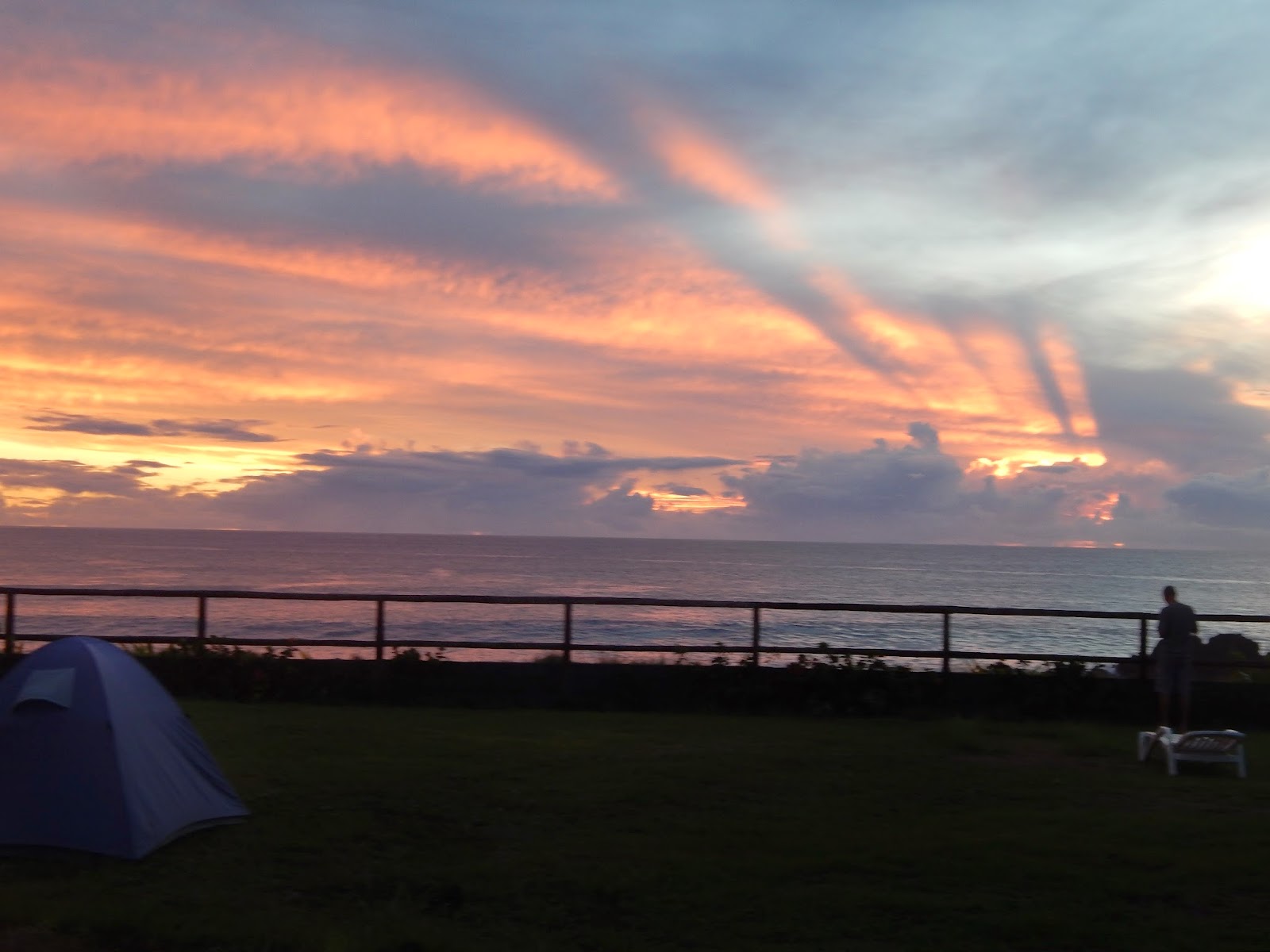Deep in the jungle, where the borders of Argentina, Brazil, and Paraguay meet is an outstanding feat of nature. For over 2 and a half kilometres stretch the Iguazú falls, waterfalls so great they make our own Canadian Niagara Falls seem small.
 |
| A Coati looking for food |
I arrived early (the first bus you can catch is at 7:20 am) and headed straight for the Upper Falls viewing platform. I followed a boardwalk that went right over the edge of the first, small waterfall. I could look right down to the crashing water 40 metes below. The walkway continued over two more waterfalls and I was looking down at the rocks and water when Mr E gasped and told me to look up. Ahead of us was a view of the entire stretch of waterfall...
 |
| My first glimpse at Iguazu Falls |
 Because we arrived so early, we had the falls completely to ourselves for the first twenty minutes but it was far from silent. That much water falling onto that many rocks creates write a roar!
Because we arrived so early, we had the falls completely to ourselves for the first twenty minutes but it was far from silent. That much water falling onto that many rocks creates write a roar!After we'd explored the Upper Falls boardwalk, we took a train 20 min further into the National Park along the wide Paraná river that feeds into the falls. Another 20 minutes of boardwalk walking over the river brought us to a large platform that looks down into the most impressive section of the falls called The Devil's Throat.
 Half of the water from the Paraná falls over the edge here, in a deep U-shaped channel. You can see water falling from the three sides of the U altogether onto the rocks below. Actually, its really difficult to see because so much mist is created from that much water falling at once. We were soaking wet by the time we left!
Half of the water from the Paraná falls over the edge here, in a deep U-shaped channel. You can see water falling from the three sides of the U altogether onto the rocks below. Actually, its really difficult to see because so much mist is created from that much water falling at once. We were soaking wet by the time we left!We took the train back to the entrance but this time hiked down the Lower Falls path. This is where you can see the two layers of falls, which is so beautiful. It's also where you can hop onto a boat that takes you closer to the falls, like the Maid of the Mist at Niagara, except much smaller.
We sealed our belongings in a dry sack, just wore our bathing suits, and held on tight for what would be a wild ride! First, the boat took us close to the Brazilian side of the falls so we could get pictures. Then, over to the Argentinian side. Next, the captain told us to put our cameras away and hold on... He steered the boat back to the Brazilian side but kept going and going until we were right under the waterfalls! Water pounded down on us from above, so hard that it was impossible to look up. Everyone was screaming like we were on a roller coaster. It was so much fun!
We had lunch with a view across Iguazú. At one point, we had to move because a curious coati tried to steal our snacks. Visiting Iguazú Falls had been the Number 1 thing that I had wanted to do before my trip stated and it did not disappoint!















